|
Putting Some Wild In Your Photography Award winning wild horse photographer Patrick Brennan, takes a Canon 5D Mark II and Sigma 150-600mm to photograph the wild horses of Sand Wash Basin.  Yes, wild, as in wild horses to be exact. In early September of 2016 I made my yearly fall camp-out to the high desert of Northwest Colorado for a week long viewing and photographing of the wild horses of Sand Wash Basin. Accompanying me, photo equipment rented from Lens Giant. This is the third year that I have rented from Lens Giant for my wild horse photography outings. This year I chose the Canon Mark 5D Mark II and the Sigma Sport 150-600mm telephoto lens. It was my first time with the Mark 5D II, and it was the second time I took out the Sigma Sport 150-600 lens with me. I arrived Sunday afternoon with a couple other fellow wild life photographers and set up camp for the rest of our group that was arriving the next day. Sand Wash Basin is 162,000 acres of government protected land for the wild horses that reside there. Pretty much in the “middle of nowhere.” The closest town of any significance is eighty to ninety miles away. Just us, the wild horses and lots of rattle snakes, can’t forget them. After getting things squared away with our home for the next 7 days, we decided to use the last of the remaining day light hours to go to one of the watering holes and get some shots of horses taking in their evening drink. We were in luck with the first waterhole we checked, where we found a good sized family band coming in to drink. We had already set up on a small hill on the other side of the water hole when the group of horses approached. I love this time of day to photograph. The film old timers used to call this the “Golden Hour,” the first and last hour of sunlight. As you can see from the waterhole photo here the light coming in from the west and shining perfectly on the horses and even deepening the reflection of the horses in the water. After a good night sleep, complete with a morning wake-up call of howling coyotes, we all got ready to start a full day of shooting. The rest of our group were due later that day, but at 7:30 a.m. we were in our vehicle with our gear and in search of our first group of wild horses. One of our group was on binocular duty when she saw a large number of horses about two and a half miles from the road. Camera gear and water in tow we started the long walk. Back to my LensGiant equipment. The Sigma Sport 150-600 lens on the 5D M II is about 10 pounds. A challenge I remember from the last time I had it out with me. Solution? Put it on a monopod and carry it across my shoulder like a sack of potatoes. Then when the time to shoot arrive lengthen the stick and start shooting. After we had hiked about two miles in to our first group of horses, we stopped to identify which band of horses we had before us and to make sure they were not spooked by our presence. We stayed in place for about 10 minutes readying our cameras and planning our final approach to the horses. I’ve been doing this for six years now and there is a right way to approach wild horses, and a wrong way. The key is to approach very slow, and if possible, approach with the wind coming at you. Horses have a keen sense of smell and often they’ll smell you before they see you. If one of the perimeter horses takes notice of you, then you stop right there and wait. The wild horses have comfort space in which they don’t see you as a threat. Each lead band stallion has their own idea of safe personal space. Fortunately, after being out here for 6 years, I know most of the stallion’s space tolerance. This particular band had about three hundred to four hundred feet boundary. We proceeded, and each time one of the horses took notice, we stopped and continued like that until we reached about 300 feet from the grazing heard. As you can see from this picture we were successful, all was peaceful and the wild horses were quietly grazing. There is nothing worse than hiking two miles and having the band of wild horses scatter to the winds away from you. It happens, but if you do it right it will be a rare thing that happens to you. We found a little hill overlooking the grazing herd and fired up our big telephoto lens for the first images of the day. On this trip I decided to use one way of shooting with the Mark5D II. One of the issues in photographing wild horses is that you have two types of shots. The first, the peaceful grazing, and other herd activity. Secondly, at any given moment two stallions might go in to fight mode and your looking to capture sports like action. I remember from my sports photography days that's why you had several other camera's draped about you. Well, when your packing a big boy like the Sigma Sport 150-600, less gear is better. I consulted with a current professional NFL sports photographer on the West Coast and sought out his advice. Normally I’m switching from manual to Aperture Priority, as well as TV. On his advice I decided to shoot exclusively in Aperture Priority and setting the f/stop as low as you can with setting off the blinking over and/or under exposure alarm. Then setting my ISO during the day time before 3 pm to 400. When using large telephoto lens, it is important that the speed be greater than the focal length to get consistent clear and sharp images. This proved to be just what the doctor ordered. When the light is fading you'll have to push your ISO higher. I found 1500 worked pretty good with me.    I was very impressed with the Canon Mark 5D II, it really performed well out there in the wild and gave great clear and crisp images. We spent the rest of the week in picture perfect weather photographing wild horses.   One of my favorite things to photograph with the wild horses, are the youngsters. Fortunately for me even in early September there were still a few youngsters to photograph. I especially enjoy capturing images as foals play together. 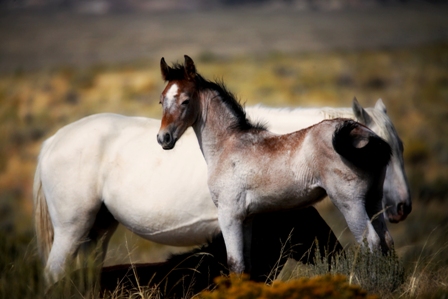 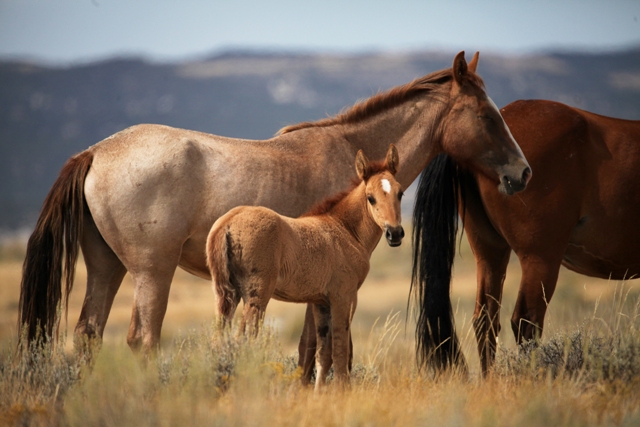
The conditions out where I was, were very dry and dusty. Of course, shooting 7 days 10 hours a day in those conditions can be very hard on any camera equipment. This should drive home the point to always purchase the damage waiver that LensGiant offers when you put in your order.
One of the things I loved on this trip was the fall colors in the brush and other foliage- yes even on the high western desert you have fall coloring. Couple that with the beginning or end of day light gives you some spectacular images.
 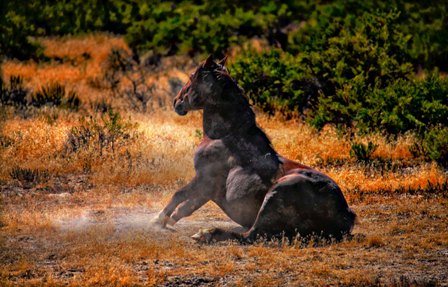 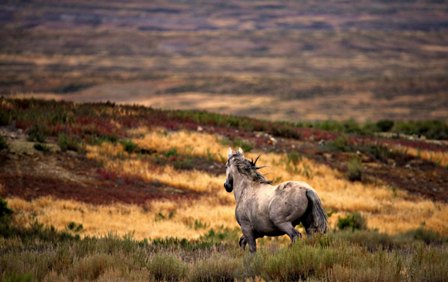 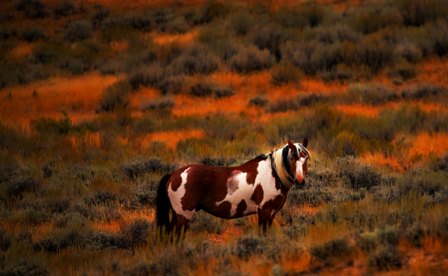
This article was written by award winning Wild Horse photographer Patrick Brennan. To see more wild horse images and other photography work, visit Patrick Brennan's website:
www.blackhatphoto.us
|